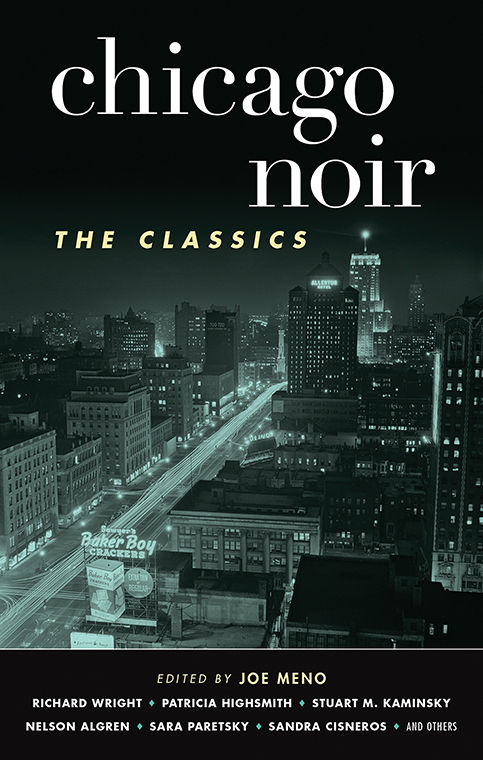Literature collection exposes Chicago’s dark history
“Chicago Noir: The Classics,” edited by Columbia College faculty member Joe Meno, was released on Sept. 1 by Akashic Books.
September 28, 2015
“Chicago Noir: The Classics,” a compilation of reprinted stories chronicling the often dark and corrupt nature of Chicago’s history, was released Sept. 1 by Akashic Books in New York.
The anthology is one installation of a series published by Akashic Books, which highlights the similarly dark pasts of other metropolitan areas and towns, including Brooklyn, New York, Cape Cod, Massachusetts, and Belfast, Ireland.
Edited and compiled by Joe Meno, associate chair of the Creative Writing Department, “Chicago Noir: The Classics” features writings from Stuart Dybek and Sandra Cisneros and includes sketches of Chicago’s history from 1916–2009, according to Johanna Ingalls, managing editor at Akashic Books.
Other contributors include Harry Stephen Keeler, Sherwood Anderson, Max Allan Collins, Richard Wright, Nelson Algren, Fredric Brown, Patricia Highsmith, Barry Gifford, Stuart M. Kaminsky, Libby Fischer Hellmann, Sara Paretsky, Percy Spurlark Parker and Hugh Holton.
“What we do is ask the editor, ‘Who do you think are the people who really made a mark before you [and other contemporaries]?'” Ingalls said.
Ingalls said the editors chose entries that embodied the literary history and distinctive character of Chicago.
Deciding which entries to include was challenging given the large volume of work Chicago offers, she added.
“We also have to figure out how to only publish 14 or so stories, so there’s always going to be great things you have to leave out or can’t get the rights to publish,” Ingalls said.
Meno said that deciding what angle the book should take was difficult when choosing stories. Ultimately, he said he used landmark events like the Prohibition era and the 1968 Democratic National Convention to tell stories from Chicago’s historical timeline.
“Once I started finding these stories, I [thought] ‘This would be great if it moved through the history of Chicago and the history of crime-writing,'” Meno said.
Meno added that the stories reflect the evolution of diversity in Chicago.
“A lot of the writers are white males in the first 20 or 30 years,” Meno said. “Then in the ’40s, you start to see writers like Patricia Highsmith. Then by the mid-80s, you see writers like Cisneros, non-male writers, and you see how crime-fiction has evolved over the years.”
According to Meno, the collection also illustrates Chicago’s geography, showing how various demographics inhabit a number of areas in Chicago.
“Chicago is such a diverse place…. Those stories themselves take place in very different neighborhoods,” Meno said. “There’s actually a map inside the book that shows where the stories are set, and it’s all over the place. It covers the terrain of Chicago both in diversity of voices and where [events] occur within the city.”
Meno said the collection also highlights how corruption, crime and cronyism is embedded in Chicago’s history. He added that he was “excited to see how other writers documented [this].”
One of those writers, Libby Hellman contributed “The Whole World is Watching,” which details the struggle of a young police officer facing his protesting mother and sister during the 1968 Democratic National Convention riots in protest of the Vietnam War.
Hellmann said “Chicago Noir” details the story of a world that changes once the sun has set.
“During the day, it’s the ‘hogbutcher of the world’ and the center of transportation, but when the sun goes down, it’s a real dangerous place. Even on Michigan Avenue,” Hellmann said.
Even with the corruption and problems the city has, there exists a bittersweet pride that can be uncovered in the tales collected in this anthology, Meno said.
“I love this city, but it has deep shadows and that’s what noir is about,” Meno said. “It’s about the underworld … and Chicago has that in spades.”








